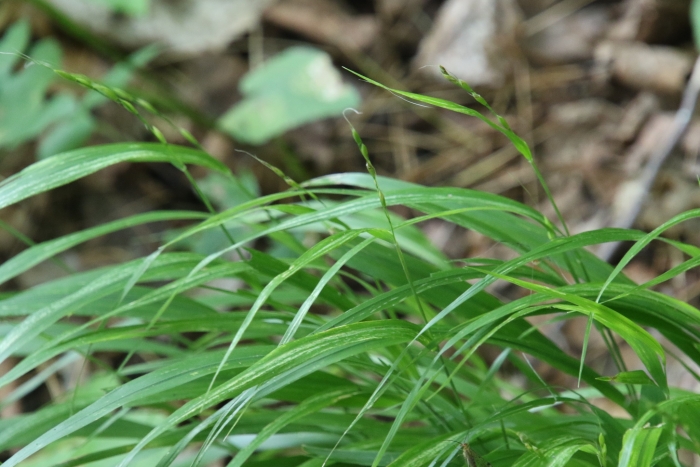White-Edge Sedge
(Carex debilis)
White-Edge Sedge (Carex debilis)
/
/

© er-birds
CC BY 4.0
Image By:
© er-birds
Recorded By:
Copyright:
CC BY 4.0
Copyright Notice:
Photo by: © er-birds | License Type: CC BY 4.0 | License URL: http://creativecommons.org/licenses/by/4.0/ | Uploader: er-birds | Publisher: iNaturalist |

























Estimated Native Range
Summary
Carex debilis, commonly known as White-edge Sedge, is a perennial herbaceous plant native to the understory of deciduous forests, often found in moist to wet areas such as floodplains, swamps, and along streams in the Eastern and Central United States and Eastern Canada. It typically grows to a height of 12-24 inches (30-60 cm) with a clumping habit. White-edge Sedge is characterized by its narrow, grass-like leaves with a distinctive white margin, and inconspicuous greenish-brown flowers that appear in late spring to early summer. The plant is not particularly showy, but it adds fine texture and a light variegation to the shade garden.
White-edge Sedge is valued for its ability to thrive in shady, moist conditions where many plants struggle. It is often used in naturalized areas, rain gardens, and as a ground cover in woodland gardens. It prefers partial to full shade and consistently moist, well-drained soils, but can tolerate drier conditions once established. This sedge is relatively low-maintenance, but it may require division every few years to maintain vigor. It is not known for serious pest or disease problems, but can occasionally suffer from rust or root rot in overly wet conditions. White-edge Sedge is not typically aggressive, but it can self-seed in optimal growing conditions.CC BY-SA 4.0
White-edge Sedge is valued for its ability to thrive in shady, moist conditions where many plants struggle. It is often used in naturalized areas, rain gardens, and as a ground cover in woodland gardens. It prefers partial to full shade and consistently moist, well-drained soils, but can tolerate drier conditions once established. This sedge is relatively low-maintenance, but it may require division every few years to maintain vigor. It is not known for serious pest or disease problems, but can occasionally suffer from rust or root rot in overly wet conditions. White-edge Sedge is not typically aggressive, but it can self-seed in optimal growing conditions.CC BY-SA 4.0
Plant Description
- Plant Type: Grass
- Height: 1-3 feet
- Width: 1-2 feet
- Growth Rate: Moderate
- Flower Color: N/A
- Flowering Season: Spring, Summer
- Leaf Retention: Deciduous
Growth Requirements
- Sun: Part Shade, Full Shade
- Water: High
- Drainage: Fast, Medium
Common Uses
Bird Garden, Erosion Control, Low Maintenance, Water Garden
Natural Habitat
Understory of deciduous forests, often found in moist to wet areas such as floodplains, swamps, and along streams
Other Names
Common Names: Weak Sedge, Michigan Sedge, Slender-Stalked Sedge
Scientific Names: , Carex debilis, Carex debilis var. typica,
GBIF Accepted Name: